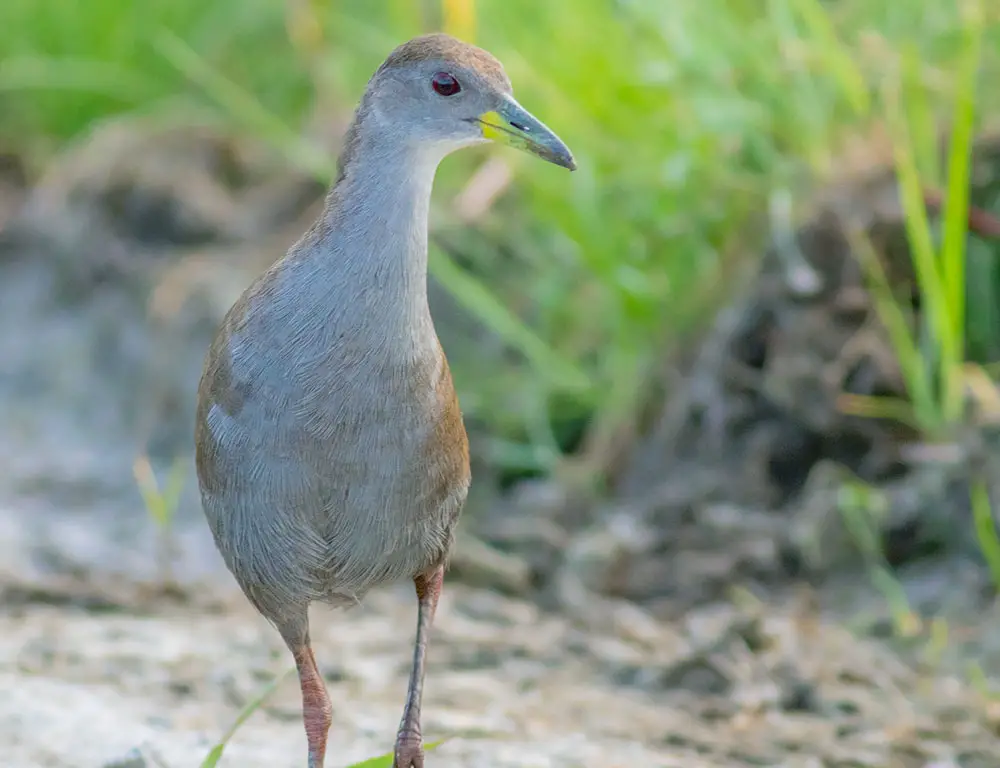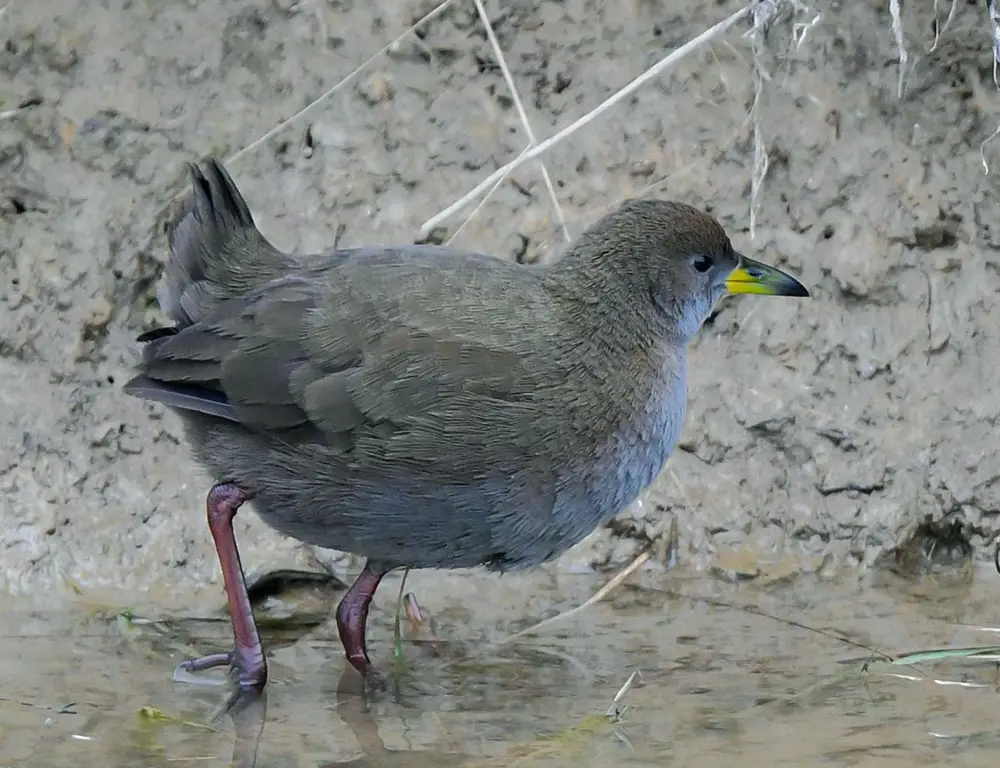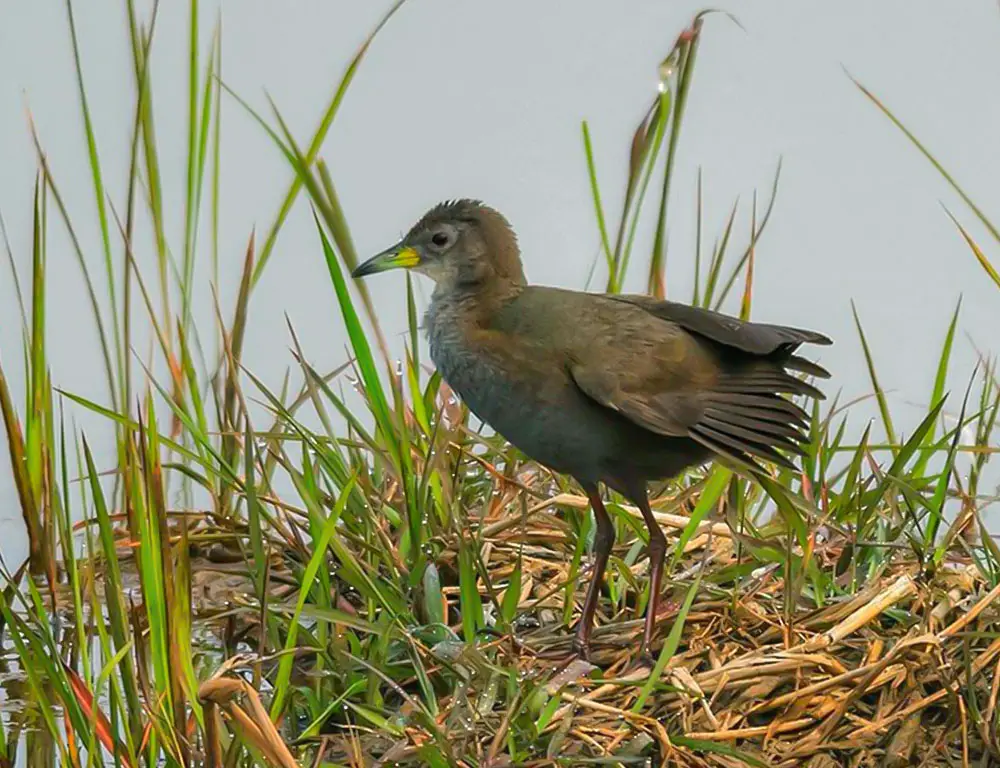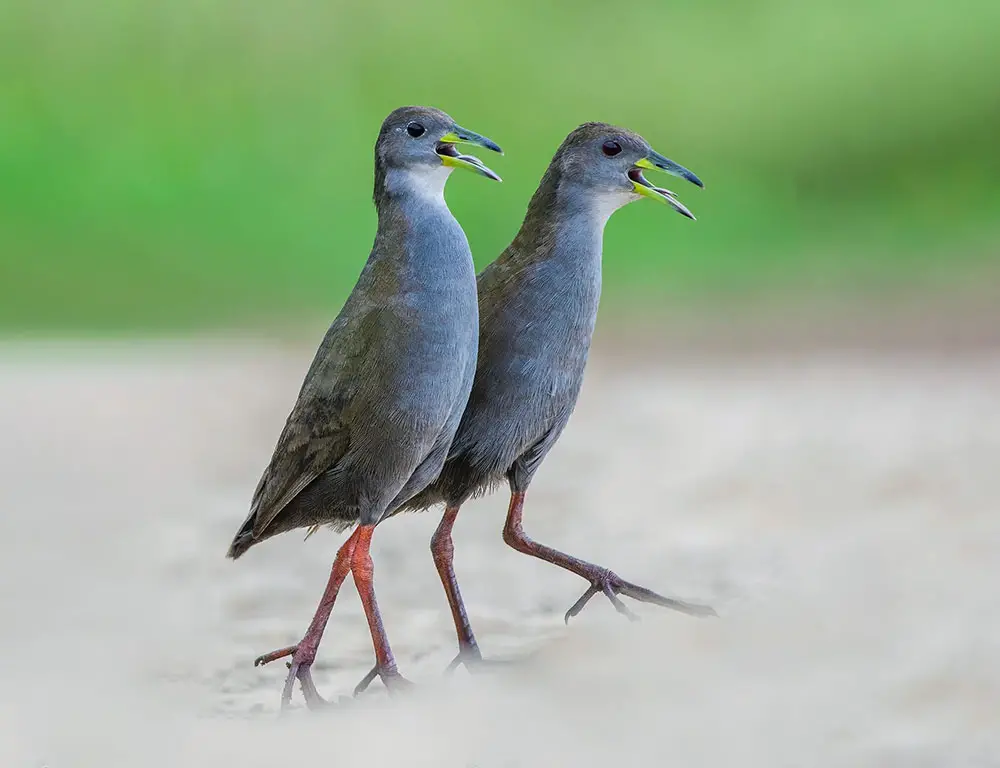If you’re a nature lover like me, the Brown Crake might be an intriguing subject. This elusive bird species, known scientifically as Amaurornis akool, is quite a mystery in the avian world.
As its name suggests, it’s primarily brown, with shades varying from earthy hues to almost black undertones. It’s small and compact, standing only 23-26 cm tall – perfect for darting around in its preferred habitats of dense vegetation and swampy areas.
Regarding distribution, the Brown Crake has an extensive range across many parts of Asia. These birds are scattered from India and Sri Lanka to southern China.
However, don’t let this wide geographical spread fool you – they are notoriously hard to spot due to their shy nature and preference for staying undercover amidst thick undergrowth.
Despite being a lesser-known species among casual birdwatchers, I’ve found that delving deeper into understanding creatures like the Brown Crake can reveal fascinating insights about our natural world.
From their unique calls resembling a series of soft whistles to their nesting habits in marshy lands – each aspect tells a captivating story about survival and adaptation in diverse ecosystems.
Physical Characteristics of the Brown Crake

The Brown Crake possesses several distinctive physical characteristics that contribute to its remarkable adaptability and survival in its habitat:
Size
Ranging from 17 to 20 cm in length, the Brown Crake is relatively small, enabling it to navigate through dense vegetation easily.
Weight
Weighing between 45 and 65 grams, these birds are lightweight, aiding their agility and flight capabilities.
Wingspan
With a wingspan of 30 to 34 cm, Brown Crakes have wings proportionate to their body size, facilitating efficient flight.
Coloration
- Upperparts: Their upper parts exhibit a rich, earthy brown coloration, providing camouflage in their habitat.
- Underparts: Contrasting with the upperparts, their underparts display shades of gray-brown or rufous, aiding in blending with their surroundings.
Legs and Mandible
One of the most striking features of the Brown Crake is the vibrant red coloration of its legs and lower mandible, which visually contrasts against its brown plumage.
Wings and Toes
- Wings: Brown Crakes have rounded wings, enhancing their maneuverability during flight and allowing them to navigate through dense vegetation.
- Toes: Equipped with long toes, these birds are well-suited for wading through wetlands, where they often reside and forage for food.
Habitat and Distribution of the Brown Crake

The Brown Crake, with its remarkable adaptability and distribution, inhabits a variety of habitats across South and Southeast Asia:
Preferred Habitats
- Wetlands & Marshes: Brown Crakes primarily inhabit wetlands and marshy areas, where they find suitable nesting sites and abundant food sources.
- Rice Fields: They are also commonly found in rice fields, which provide additional foraging opportunities.
Urban Presence
Brown Crakes are not opposed to human-populated areas, often seen in gardens and parks that feature small bodies of water. This adaptability to urban environments distinguishes them from many other bird species.
Geographical Distribution
- South Asia: Most Brown Crakes are found in South Asian countries such as India, Nepal, and Bangladesh, where wetlands and marshes are prevalent.
- Southeast Asia: They are also scattered across Southeast Asian nations like Thailand, Cambodia, and Vietnam, expanding their range beyond South Asia.
Breeding Season Migration
Brown Crakes exhibit a notable shift in their distribution pattern during the breeding season. They migrate northwards into the Himalayan foothills, including Bhutan and Northeast India regions.
This movement likely corresponds to the availability of suitable breeding habitats and resources during that time.
Adaptive Nature
One of the most intriguing aspects of Brown Crakes is their adaptability to different habitat types. Unlike many other bird species with strict habitat preferences, Brown Crakes can thrive equally well in grassland and wetland environments.
This adaptability proves advantageous during migration periods when resources may be scarce or environmental conditions change.
Behavior and Diet of the Brown Crake

The behavior and diet of the Brown Crake showcase its unique adaptations and preferences:
Twilight Activity
Brown Crakes are crepuscular birds, meaning they are most active during the dawn and dusk. They often remain hidden in dense vegetation during daylight hours and emerge to forage when light levels are lower.
Solitary Nature
Unlike many other bird species, Brown Crakes prefer solitude and are typically seen alone or in pairs, especially during breeding. They exhibit territorial behavior, aggressively defending their territories against intruders.
Diverse Diet
The Brown Crake has a diverse diet, including insects like beetles and dragonflies, small fish, amphibians, seeds, and berries. This dietary flexibility allows them to exploit various food sources depending on availability.
Foraging Behavior
While primarily ground-feeders, Brown Crakes display adaptability in their foraging behavior. They may climb up stems or perch on leaves to hunt for insects.
Near water bodies, they wade through shallow waters to capture aquatic prey, showcasing their versatility in feeding strategies.
Reproduction and Nesting Habits of the Brown Crake

The reproductive behavior and nesting habits of the Brown Crake provide insight into their breeding ecology:
Breeding Season
Brown Crakes typically breed from May to August. During this time, they become more vocal and active, with males using distinctive calls to court potential mates.
Nest Construction
The nest of a Brown Crake is a shallow cup made from plant materials such as leaves and twigs. These nests are often concealed within dense vegetation near water bodies, providing privacy and protection for the nesting pair and their eggs.
Egg Laying
Female Brown Crakes lay clutches of 3-6 eggs per breeding season. The eggs are typically oval-shaped and have a creamy white coloration speckled with brownish spots.
This speckled pattern helps camouflage the eggs within their nest environment, reducing predation risk.
Incubation and Parental Care
After laying the eggs, male and female Brown Crakes incubate them until they hatch. Once the eggs hatch, both parents care for the nestlings, providing them food and protection until they are ready to fledge.
Fledging and Independence
The nestlings typically fledge after a few weeks, at which point they can independently forage and fly. However, they may continue to receive parental care for some time until they become fully self-sufficient.
Conservation Status of the Brown Crake

The Brown Crake, currently classified as “Least Concern” by the International Union for Conservation of Nature (IUCN), enjoys a stable population trend.
However, this designation doesn’t imply immunity to potential threats but reflects the species’ wide distribution and apparent population stability.
Here are some key points regarding the conservation status of the Brown Crake:
IUCN Status: “Least Concern”
This classification indicates that the species is not currently endangered or vulnerable. However, it’s essential to remain vigilant about potential threats and monitor changes in population trends and habitat conditions.
Population Trend: Stable
The population of Brown Crakes is currently stable, suggesting no significant declines or increases in numbers.
Threats
Destruction and degradation of wetland habitats pose a significant threat to Brown Crakes. They rely heavily on wetlands for survival, so any alteration or loss of these habitats could adversely affect their population.
Conservation Efforts
- Preservation Initiatives: Various preservation initiatives are underway in different countries to conserve wetland ecosystems, which are crucial habitats for Brown Crakes and numerous other species.
- Education Campaigns: Education and awareness-raising campaigns are vital in highlighting the importance of biodiversity conservation and the protection of wetland habitats.
- Legal Protections: Legal safeguards, such as habitat protection laws and regulations, help mitigate threats like habitat destruction and provide necessary safeguards for the Brown Crake and its habitat.
Conclusion
Wrapping up our deep dive into the world of the Brown Crake, I’ve come to appreciate this often-overlooked bird species. Their unique behaviors and habitats make them a fascinating subject for birdwatchers and nature enthusiasts alike.
Despite their small size and seemingly ordinary appearance, Brown Crakes possess some exciting characteristics. They’re adaptable creatures that can survive in various environments – from wetlands to dry grasslands.
This versatility is one reason they’ve spread across different parts of Asia.
Isn’t it intriguing how these birds have such intricate mating rituals? The remarkable way males flaunt their feathers and perform dances to win over females.
But all’s not well in paradise. Like many other wildlife species, Brown Crakes face threats due to habitat loss. It’s disheartening to think how human activities are disrupting their peaceful existence.
Here are some key takeaways about the Brown Crake:
- Small yet resilient: Despite being small, they’re sturdy birds capable of adapting to various environments.
- Intricate rituals: Their mating dances are complex displays aimed at attracting mates.
- Threatened by habitat loss: Human activities like urbanization and agriculture threaten their survival.
For the love of these intriguing creatures, let’s hope more conservation efforts will be implemented soon. It’ll be a sad day when the song of the Brown Crake no longer fills our wetlands.
As we continue exploring diverse wildlife species around us, remember that each creature, big or small, has its unique role in maintaining ecological balance on Earth.
So next time you spot a seemingly ordinary little brown bird among reeds or grasses, stop for a moment… it might just be a Brown Crake performing its silent symphony!